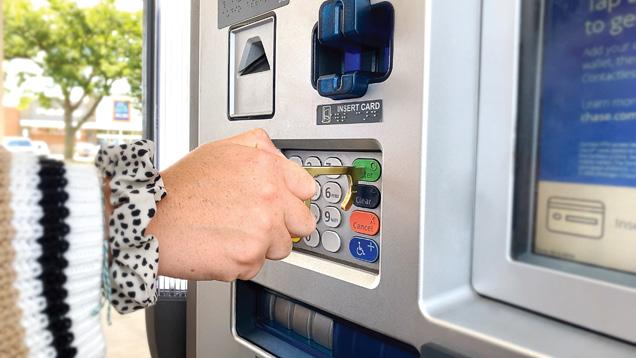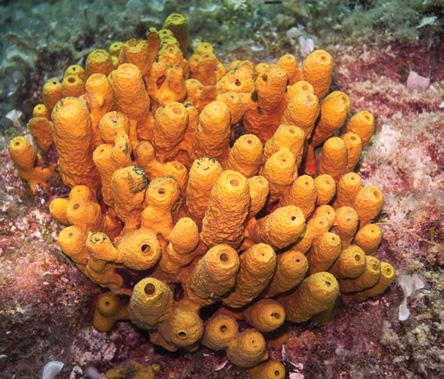
9 minute read
By the Numbers
Since 2017, there has been a steady growth in online school attendance for students enrolled in post-secondary institutions. Each year, the spike in online platforms influences the market’s academic and employment strategies. Before the COVID-19 pandemic placed an even greater emphasis on innovating effective, distance technologies, two-year colleges and traditional brick-and-mortar universities were already expanding their curriculums to include virtual options. At their best, universities should not only prepare working professionals for the contemporary market, they should also resemble it in every function. As employees transition to online business for the long haul, so too, are educational institutions around the world.
2017 ONLINE EDUCATION STATISTICS:
A total of 19.7 million students enrolled in courses at degree-granting postsecondary institutions.
Of these, 6.6 million students enrolled in some form of distance education/online learning courses.
There were 5.5 million undergraduate students (3.2 million of these students or 19.5% took at least one but not all their courses online, while 2.2 million of these students or 13.3% enrolled in exclusively distance education/online courses)
There were 1.4 million post-baccalaureate students (274,211 of these students or 9.1% took at least one but not all their courses online, while 868,708 of students or 28.9% enrolled in exclusively distance education/online courses.
2018 ONLINE EDUCATION STATISTICS
In 2018, the most popular undergraduate programs online were:
Health & Medicine Business
23%
19%
Social Sciences, Computers & IT 10% 11%Arts & Humanities Criminal Justice & Law 13%
2019 ONLINE EDUCATION STATISTICS: 2020 ONLINE EDUCATION STATISTICS AND COVID-19
46% of faculty members said they have taught an online course for credit compared to 39% in 2016 As of June 15, 4-year institutions are seeing an average of 6-8% decline in Fall 2020 enrollment
38% of faculty members used a blended or hybrid course format including both online learning and face-to-face instruction
39% of faculty members indicated they supported increased usage of technology in education, compared to 29% in 2017
60% of faculty members feel that academic dishonesty is more prevalent in online teaching vs. face-to-face settings compared to 39% who feel it occurs equally in both situations As of April 2, 98% of institutions had moved most in-person classes online
95% of institutions suspended travel for faculty & staff
93% of institutions implemented work-remotely policies for staff
43% of institutions had invested in new online learning resources






The Virtual Season
While the COVID-19 pandemic continues and in-person events are being shelved into next year, the birth of the virtual venue has quickly become a growing commodity.
Not only to stave off further infections, the online event has also become an effective cost-cutting tool for companies around the world. No more travel costs. No more logistical nightmares. The headache of travel and the financial limitations on businesses and their executives may soon become a thing of the past.
Some of last quarter’s most prominent virtual events included:
CEDIA Expo
This premier trade event spearheaded one of the industry’s first completely virtual trade shows for the custom integration and design communities. The event took place Sept. 15-17 and saw 7,600 trade professionals come together to connect and discuss topics facing the industry this year and next.
There were 110 virtual exhibitors, 235 media registrants, 161,740 exhibitor booth views, 14,288 virtual panel discussion or program registrations, and over 7,600 CEDIA Expo Virtual Experience registrants.
Samantha Ventura, CEDIA’s Senior Vice President of Education and Training, told Innovation & Tech Today learners from around the world attended the event for a wide range of highly technical business topics and everything in between.
“As a result, attendees were treated with a valuable opportunity to gain a leading edge, and top of the industry expertise from wherever they were,” she said. “The feedback showed the subject matter was on-point and relevant. We look forward to integrating lessons learned from this global platform into future CEDIA Education programming and future CEDIA Expos.”
Emerge Virtual Cannabis Conference & Expo
The event featured noted speakers like Jim Belushi and industry CEO, Wanda James, in a Hyperfair platform and avatar-based virtual ecosystem while educating attendees on the latest in cannabis discoveries, trends, innovations, and policies.
Taking place Sept. 8-10, the event saw nearly 1,200 attendees pour into the virtual exposition hall on day one. Overall, 1,600 attendees enjoyed the immersive experience. The event included more than 15,000 business cards exchanged, over 9,000 individual conversations, 50 sessions, six keynotes, three days, and zero masks.
Kristi Dougherty, CEO at Reach Consultancy and Event Director for Emerge, said “the cannabis industry is too dynamic and rapidly evolving to ignore connections, education, and development opportunities while the country copes with COVID restrictions.”
“The Emerge Virtual Cannabis Conference & Expo is the closest replication of a large in-person event that we can provide right now to meet those needs in our community,” she said. Attendance and sponsorship at Emerge ensures cannabis business, science, and legislation continues to move forward into 2021 and beyond.”







The more scientists learn about Antarctica, the grimmer the predictions. Data compiled by the Potsdam Institute for Climate Impact Research shows sea levels around the world will rise about two and a half meters as the Antarctic ice sheet continues to melt.
Although scientists expect the sheet of ice to be around for a few more centuries, there is an expiration date now as the global average temperature continues to rise. Researchers concluded that melting will likely take place over a long period but may be irreversible because of the way the ice cap is expected to melt.
While the ice sheet has looked relatively the same for the last 34 million years, scientists from the Potsdam Institute say its future form will be decided within our lifetime.
Photo: iStockphoto.com/Bernhard_Staehli



Photo: iStockphoto.com/Dr_Microbe
The Plastic Pig
By linking two enzymes found in a plastic-eating bug at a Japanese waste site in 2016, scientists at the University of Portsmouth, UK have engineered a new super enzyme capable of degrading plastic bottles six times faster than the contemporary rate.
To boot, experts believe combining it with enzymes that break down cotton could also allow mixed-fabric clothing to be recycled. According to the research, millions of tons of such clothing is either dumped into landfills or incinerated.
Derived from bacteria with the natural ability to eat plastic, the robust enzyme makes the full recycling of plastic bottles a reality. Currently, there are new plastics being created from oil as it is difficult to break plastic bottles down into their chemical components to create new from the old.
The new super-enzyme works at room temperature while experts say combining different approaches could speed progress towards commercial use.
This illustration shows Jezero Crater — the landing site of the Mars 2020 Perseverance rover — as it may have looked billions of years ago on Mars, when it was a lake. An inlet and outlet are also visible on either side of the lake. Photo: NASA/JPL-Caltech
Lakefront Property on Mars?
While Earthlings have long speculated whether or not something’s scurrying about the surface of Mars or patrolling the desert skies in twirling Unidentified Flying Objects, few have ever considered the likelihood of lakefront property somewhere on the red planet.
Recently, researchers from the University of Rome say they’ve confirmed the presence of a large saltwater lake beneath the ice on the Martian surface, and at least three more. The discoveries were made using radar data from the Mars Express, an orbiting spacecraft launched by the European Space Agency.
According to the study, areas of high reflectivity were detected, indicating bodies of liquid water trapped under more than one kilometer of Martian ice. Scientists say the lakes are spread over about 75,000 square kilometers — an area roughly one-fifth the size of Germany.
The largest lake measures 30 kilometers across and is surrounded by three smaller lakes, each measuring a few kilometers wide.
Photo: iStockphoto.com/tunart


Another Feather in the Cap
They know who they are. Whether it is a crow, a raven, or another version of corvid, they are often renowned for their memory, their gift-giving, and their ability to solve geometric puzzles and build tools.
Well now, scientists from Vanderbilt University and the University of Tübingen in Germany say the birds also “know what they know” and can ponder the content of their own minds, a degree of intelligence and investigative thought resemblant of humans.
At 1.5 billion neurons, the research shows a crow’s brain has as many as some monkey species. But Corvids aren’t the only birds with brains. A 2014 study showed certain crows, rooks, and European jays can solve an old fable challenge of dropping stones into a water-filled tube to bring a floating bit of food within reach, something kids generally can’t do until age 7.
These birds were the first nonhuman animals to solve the task, according to the study.

Sponge Job
While most see them as little porous mushroom-like stalks sprouting from the seafloor, a group of Harvard researchers now see marine sponges as ideal models for stronger and taller buildings, longer bridges, and lighter spacecraft.
According to the research, the diagonally-reinforced, square lattice-like skeletal structure of Euplectella aspergillum, a deep-water marine sponge, has a higher strength-to-weight ratio than the traditional lattice designs used for centuries in the construction of buildings and bridges.
Using this natural design as inspiration for the future of building, researchers showed the paired parallel, crosseddiagonal structure of marine sponges improved overall structural strength by more than 20 percent and without the need to include additional materials. When compared to other building strategies, the study showed the sponge design outperformed them all, capable of withstanding heavier loads without buckling.
Photo: iStockphoto.com/racerunner
Have Your Caffeine Yet?
Photo: iStockphoto.com
Contrary to common belief, research published by the American Psychological Association revealed caffeine can help adolescents pay attention for longer periods of time.
In a study made up of three testing sessions, 31 adolescents consumed either 1 mg/kg of caffeine, 3 mg/kg of caffeine, or a placebo before completing a continuous assignment. Scientists say the task lasted approximately 30 minutes and required the participants to examine a stream of four-digit numbers to pick up on the few identical pairs.
Each participant was asked to abstain from caffeine for 24 hours before each testing session.
While performance declined over time, the task’s early stage was comparable across all three doses. However, researchers discovered performances among participants who received caffeine declined less as time dragged on compared to the placebo.




